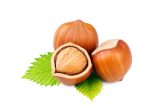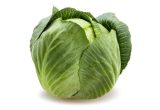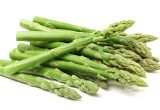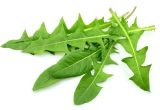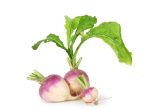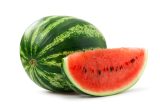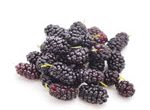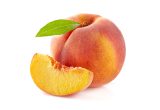Spinach

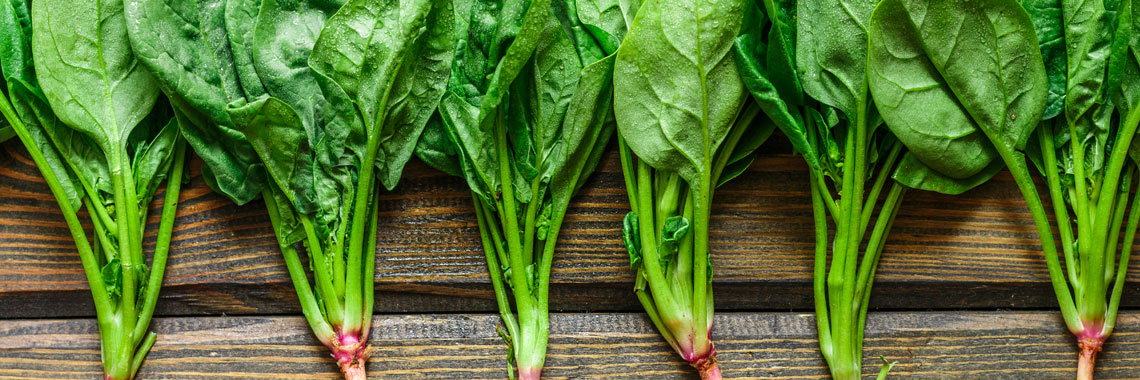
Description
- Spinach (Spinacia oleracea) belongs to the Chenopodiaceae family.
PHYSICAL AND ORGANOLEPTIC CHARACTERISTICS
- An experiment showed that spinach grown in spring or winter presented a number of differences, notably in leaf colouration, which was much more intense when grown under spring conditions (Conversa, 2014).
- Spinach can be found in different colours ranging from yellowish green to dark green (Kumar Sa, 2017) due to its content of chlorophyll a and b (Kidmose, 2005).
- Spinach has a characteristic odour, with a sweet taste and a smooth texture (Kumar Sa, 2017).
COMPOSITION CHARACTERISTICS (excluding macronutrients, vitamins and minerals)
- When grown in spring conditions, spinach is richer in total phenols than when grown in winter conditions (Conversa, 2014).
- This green leafy vegetable is rich in carotenoids and folic acid (Xu, 2017).
- The majority carotenoids present are lutein and β-carotene. Their synthesis is closely linked to the synthesis of chlorophyll (Reif, 2012).
- Lutein is a xanthophyll involved in the prevention of age-related macular degeneration. Its health effects depend on its bioavailability, which can be modulated by dietary intake and particularly spinach consumption (Margier, 2017).
- Spinach is a good source of oxyprenylated umbelliferone and ferulic acid derivatives, classified as nutraceutical agents (Fiorito, 2019).
- Phytochemicals and bioactive substances derived from spinach, such as glycolipids and thylakoids, are able to:
- trap reactive oxygen species:
- prevent macromolecular oxidative damage;
- modulate the expression and activity of genes involved in metabolism, proliferation, inflammation and antioxidant defence;
- and limit food intake by inducing the secretion of satiety hormones.
- These biological activities contribute to the anticancer, anti-obesity, hypoglycemic and hypolipidemic properties of spinach (Roberts, 2016).
BOILED
The following values are approximate and depend on variety, season, ripeness, cultivation conditions, etc.
Boiled spinach is low in energy* as it provides an average of 28.10 calories (kcal) per 100 g, i.e. 117 kJ.
For each nutrient, the tables provide information on the content, minimum and maximum values, as well as the percentage of the Dietary Reference Values (DRVs) per 100 g net of boiled/water-cooked spinach.
*Regulation (EC) No 1924/2006 of the European Parliament and of the Council of 20 December 2006 on nutrition and health claims made on foods.
MACRONUTRIENTS
| Constituent (g) | Average content |
Min-Max per 100g |
DRV% |
|---|---|---|---|
| Water | 91,9 | - | - |
| Fibers | 3,50 | - | - |
| Carbohydrates | < 0,85 | - | - |
| Sugars | - | - | - |
| Lipids | 0,70 | - | 1 |
| Saturated fat | 0,13 | - | 0,65 |
| Protein | 3,38 | 3,30 - NC | 6,76 |
| Constituent (g) | Amount | Min-Max | DRV% |
|---|---|---|---|
| Water | Ciqual 2020 (valeur issue des analyses Ciqual-Aprifel 2018) | - | - |
| Fibers | Ciqual 2020 | - | - |
| Carbohydrates | Ciqual 2020 | - | Règlement (UE) N°1169/2011 du parlement Européen et du conseil du 25 octobre 2011 |
| Sugars | Ciqual 2020 (valeur issue des analyses Ciqual-Aprifel 2018) | - | Règlement (UE) N°1169/2011 du parlement Européen et du conseil du 25 octobre 2011 |
| Lipids | Ciqual 2020 (valeur issue des analyses Ciqual-Aprifel 2018) | - | Règlement (UE) N°1169/2011 du parlement Européen et du conseil du 25 octobre 2011 |
| Saturated fat | Ciqual 2020 (valeur issue des analyses Ciqual-Aprifel 2018) | - | Règlement (UE) N°1169/2011 du parlement Européen et du conseil du 25 octobre 2011 |
| Protein | Ciqual 2020 (valeur issue des analyses Ciqual-Aprifel 2017) | - | Règlement (UE) N°1169/2011 du parlement Européen et du conseil du 25 octobre 2011 |
Zoom on carbohydrates
- Boiled spinach can be said to be “sugar-free*” as it contains less than 0.5 g of sugar per 100 g.
Zoom on fibres
- Boiled spinach is a source of* fibre, as it provides more than 3 g of fibre per 100 g, i.e. 3.50 g per 100 g.
- This amount is higher than the average content found in cooked vegetables (2.43 g per 100 g).
Zoom on proteins
- The amount of protein (3.38 g per 100 g) is higher than the average amount provided by cooked vegetables (2 g per 100 g).
Zoom on lipids
- The fat content of boiled spinach (0.70 g per 100 g) is higher than the average amount found in cooked vegetables (0.52 g per 100 g).
- Boiled spinach is fat-free* as it contains less than 0.5 g of fat per 100 g.
*Regulation (EC) No 1924/2006 of the European Parliament and of the Council of 20 December 2006 on nutrition and health claims made on foods.
MINERALS AND TRACE ELEMENTS
| Constituent | Average content |
Min-Max per 100g |
DRV% |
|---|---|---|---|
| Calcium (mg) | 240 | - | 30 |
| Chloride (mg) | < 20 | - | - |
| Copper (mg) | 0,14 | - | 14 |
| Iron (mg) | 1,30 | - | 9,29 |
| Iodine (µg) | < 20 | - | - |
| Magnesium (mg) | 30 | - | 8 |
| Manganese (mg) | 0,81 | - | 40,50 |
| Phosphorus (mg) | 30 | - | 4,29 |
| Potassium (mg) | 160 | - | 8 |
| Selenium (µg) | < 20 | - | - |
| Sodium (mg) | 12 | - | - |
| Zinc (mg) | 0,79 | - | 7,90 |
| Constituent | Amount | Min-Max | DRV% |
|---|---|---|---|
| Calcium (mg) | Ciqual 2020 (valeur issue des analyses Ciqual-Aprifel 2018) | - | Règlement (UE) N°1169/2011 du parlement Européen et du conseil du 25 octobre 2011 |
| Chloride (mg) | Ciqual 2020 (valeur issue des analyses Ciqual-Aprifel 2018) | - | Règlement (UE) N°1169/2011 du parlement Européen et du conseil du 25 octobre 2011 |
| Copper (mg) | Ciqual 2020 (valeur issue des analyses Ciqual-Aprifel 2018) | - | Règlement (UE) N°1169/2011 du parlement Européen et du conseil du 25 octobre 2011 |
| Iron (mg) | Ciqual 2020 (valeur issue des analyses Ciqual-Aprifel 2018) | - | Règlement (UE) N°1169/2011 du parlement Européen et du conseil du 25 octobre 2011 |
| Iodine (µg) | Ciqual 2020 (valeur issue des analyses Ciqual-Aprifel 2018) | - | Règlement (UE) N°1169/2011 du parlement Européen et du conseil du 25 octobre 2011 |
| Magnesium (mg) | Ciqual 2020 (valeur issue des analyses Ciqual-Aprifel 2018) | - | Règlement (UE) N°1169/2011 du parlement Européen et du conseil du 25 octobre 2011 |
| Manganese (mg) | Ciqual 2020 (valeur issue des analyses Ciqual-Aprifel 2018) | - | Règlement (UE) N°1169/2011 du parlement Européen et du conseil du 25 octobre 2011 |
| Phosphorus (mg) | Ciqual 2020 (valeur issue des analyses Ciqual-Aprifel 2018) | - | Règlement (UE) N°1169/2011 du parlement Européen et du conseil du 25 octobre 2011 |
| Potassium (mg) | Ciqual 2020 (valeur issue des analyses Ciqual-Aprifel 2018) | - | Règlement (UE) N°1169/2011 du parlement Européen et du conseil du 25 octobre 2011 |
| Selenium (µg) | Ciqual 2020 (valeur issue des analyses Ciqual-Aprifel 2018) | - | Règlement (UE) N°1169/2011 du parlement Européen et du conseil du 25 octobre 2011 |
| Sodium (mg) | Ciqual 2020 (valeur issue des analyses Ciqual-Aprifel 2018) | - | - |
| Zinc (mg) | Ciqual 2020 (valeur issue des analyses Ciqual-Aprifel 2018) | - | Règlement (UE) N°1169/2011 du parlement Européen et du conseil du 25 octobre 2011 |
Zoom on minerals and trace elements
- Boiled spinach is high in:
- manganese as it provides the equivalent of 40.50% of DRVs, i.e. 0.81 mg per 100 g;
- calcium as it provides the equivalent of 30% of DRVs, i.e. 40 mg per 100 g.
- According to the Ciqual 2020 table, spinach is the vegetable that contains the most manganese and calcium.
- It also provides significant amounts of copper and iron. It provides the equivalent of:
- 14% of DRVs for copper, i.e. 0.14 mg per 100 g;
- 9.29% of DRVs for iron, i.e. 1.30 mg per 100 g.
- Other minerals and trace elements represent less than 9% of DRVs.
VITAMINS
| Constituent | Average content |
Min-Max per 100g |
DRV% |
|---|---|---|---|
| Provitamin A Beta-carotene (µg) | 6 680 | - | - |
| Vitamin A equivalent (µg) | 1113,33 | - | 139,17 |
| Vitamin B1 (mg) | < 0,015 | - | - |
| Vitamin B2 (mg) | 0,053 | - | 3,79 |
| Vitamin B3 (mg) | < 0,10 | - | - |
| Vitamin B5 (mg) | 0,15 | - | 2,50 |
| Vitamin B6 (mg) | 0,038 | - | 2,71 |
| Vitamin B9 (µg) | 62,70 | - | 31,35 |
| Vitamin C (mg) | < 0,50 | - | - |
| Vitamin E (mg) | 3,98 | - | 33,17 |
| Vitamin K1 (µg) | 38,10 | - | 50,80 |
| Constituent | Amount | Min-Max | DRV% |
|---|---|---|---|
| Provitamin A Beta-carotene (µg) | Ciqual 2020 (valeur issue des analyses Ciqual-Aprifel 2018) | - | - |
| Vitamin A equivalent (µg) | Calcul à partir de la valeur Provitamine A Béta-carotène* | - | Règlement (UE) N°1169/2011 du parlement Européen et du conseil du 25 octobre 2011 |
| Vitamin B1 (mg) | Ciqual 2020 (valeur issue des analyses Ciqual-Aprifel 2018) | - | Règlement (UE) N°1169/2011 du parlement Européen et du conseil du 25 octobre 2011 |
| Vitamin B2 (mg) | Ciqual 2020 (valeur issue des analyses Ciqual-Aprifel 2018) | - | Règlement (UE) N°1169/2011 du parlement Européen et du conseil du 25 octobre 2011 |
| Vitamin B3 (mg) | Ciqual 2020 (valeur issue des analyses Ciqual-Aprifel 2018) | - | Règlement (UE) N°1169/2011 du parlement Européen et du conseil du 25 octobre 2011 |
| Vitamin B5 (mg) | Ciqual 2020 (valeur issue des analyses Ciqual-Aprifel 2018) | - | Règlement (UE) N°1169/2011 du parlement Européen et du conseil du 25 octobre 2011 |
| Vitamin B6 (mg) | Ciqual 2020 | - | Règlement (UE) N°1169/2011 du parlement Européen et du conseil du 25 octobre 2011 |
| Vitamin B9 (µg) | Ciqual 2020 (valeur issue des analyses Ciqual-Aprifel 2018) | - | Règlement (UE) N°1169/2011 du parlement Européen et du conseil du 25 octobre 2011 |
| Vitamin C (mg) | Ciqual 2020 (valeur issue des analyses Ciqual-Aprifel 2018) | - | Règlement (UE) N°1169/2011 du parlement Européen et du conseil du 25 octobre 2011 |
| Vitamin E (mg) | Ciqual 2020 (valeur issue des analyses Ciqual-Aprifel 2018) | - | Règlement (UE) N°1169/2011 du parlement Européen et du conseil du 25 octobre 2011 |
| Vitamin K1 (µg) | Ciqual 2020 (valeur issue des analyses Ciqual-Aprifel 2018) | - | Règlement (UE) N°1169/2011 du parlement Européen et du conseil du 25 octobre 2011 |
Zoom on vitamins
- Boiled spinach is high in:
- vitamin A, carotenoids family, as it provides the equivalent of 139.17% of DRVs, i.e. 1113.33 µg per 100 g; according to the data of the Ciqual 2020 table, cooked spinach is after carrot and cooked red pepper, the vegetable which contains the most β-carotene;
- vitamin K1, as it provides the equivalent of 50.80% of DRVs, i.e. 38.10 µg per 100 g;
- vitamin E, as it provides the equivalent of 33.17% of DRVs, i.e. 3.98 mg per 100 g; according to the data of the Ciqual 2020 table, cooked spinach is the vegetable which contains the most vitamin E;
- vitamin B9, as it provides the equivalent of 31.35% of DRVs, i.e. 62.70 µg per 100 g.
- The other vitamins are present in quantities representing less than 4% of DRVs.
* Calculation made: Beta-carotene / 6 + retinol
POLYPHENOLS
| Constituent (mg) | Average content |
Min-Max per 100mg |
|---|---|---|
| Flavonoids (mg) | 6,59 | - |
| of which Flavonols (mg) | 1,30 | - |
| of which Flavones (mg) | 3,72 | - |
| of which Other Flavonoids (mg) | 1,57 | - |
| Phenolic Acids (mg) | 0,86 | - |
| of which Hydroxybenzoic acids (mg) | 0,38 | - |
| of which Hydroxycinnamic acids (mg) | 0,48 | - |
| Other Polyphenols (mg) | 23,65 | - |
| Total polyphenols | 31,10 | - |
| Constituent (mg) | Amount | Min-Max |
|---|---|---|
| Flavonoids | Etude CTCPA-Aprifel 2018 -Méthode utilisée : HPLC | - |
| of which Flavonols | Etude CTCPA-Aprifel 2018 -Méthode utilisée : HPLC | - |
| of which Flavones | Etude CTCPA-Aprifel 2018 -Méthode utilisée : HPLC | - |
| of which Other Flavonoids | Etude CTCPA-Aprifel 2018 -Méthode utilisée : HPLC | - |
| Phenolic Acids | Etude CTCPA-Aprifel 2018 -Méthode utilisée : HPLC | - |
| of which Hydroxybenzoic acids | Etude CTCPA-Aprifel 2018 -Méthode utilisée : HPLC | - |
| of which Hydroxycinnamic acids | Etude CTCPA-Aprifel 2018 -Méthode utilisée : HPLC | - |
| Other Polyphenols | Etude CTCPA-Aprifel 2018 -Méthode utilisée : HPLC | - |
| Total polyphenols | Etude CTCPA-Aprifel 2018 -Méthode utilisée : HPLC | - |
Zoom on polyphenols
- Polyphenols are substances with an antioxidant effect.
- The polyphenols present in cooked spinach are mainly in the form of flavones, from the flavonoid family.
Nutrition and health claims
According to the definitions of nutrition claims as presented in Regulation (EC) No 1924/2006 on nutrition and health claims, and in view of the composition of boiled spinach, the following claims may be used:
NUTRITION CLAIMS OF BOILED SPINACH
- Low in energy (100 g of boiled spinach provide less than 40 kcal)
- Sugar-free (100 g of boiled spinach contain no more than 0.5 g of sugars)
- Fat-free (100 g of boiled spinach contain no more than 0.5 g of fat)
- High in vitamin A (100 g of boiled spinach provide more than 30% of DRVs)
- High in vitamin K1 (100 g of boiled spinach provide more than 30% of DRVs)
- High in manganese (100 g of boiled spinach provide more than 30% of DRVs)
- High in vitamin E (100 g of boiled spinach provide more than 30% of DRVs)
- High in vitamin B9 (100 g of boiled spinach provide more than 30% of DRVs)
- High in calcium (100 g of boiled spinach provide 30% of DRVs)
- Source of fibre (100 g of boiled spinach provide over 3 g of fibre)
HEALTH CLAIMS (for a consumption of 100 g of boiled spinach)
Vitamin A
- Vitamin A has a role in the process of cell specialisation.
- Vitamin A contributes to:
- maintenance of normal skin,
- maintenance of normal mucous membranes,
- maintenance of normal vision,
- normal iron metabolism,
- normal function of the immune system.
Vitamin K1
- Vitamin K1 contributes to:
- maintenance of normal bones,
- normal blood clotting.
Manganese
- Manganese contributes to:
- normal energy-yielding metabolism,
- maintenance of normal bones,
- normal formation of connective tissues,
- protection of cells from oxidative stress.
Vitamin E
- Vitamin E contributes to the protection of cells from oxidative stress.
Folates or vitamin B9
- Folates contribute to:
- maternal tissue growth during pregnancy,
- normal amino acid synthesis,
- normal blood formation,
- normal homocysteine metabolism,
- normal psychological function,
- normal function of the immune system,
- reduction of tiredness and fatigue.
- Folates have a role in the process of cell division.
Calcium
- Calcium contributes to:
- normal blood clotting,
- normal energy-yielding metabolism,
- normal muscle function,
- normal neurotransmission,
- normal function of digestive enzymes.
- Calcium has a role in the process of cell division and specialisation.
- Calcium is needed for:
- maintenance of normal bones,
- maintenance of normal teeth,
- (along with vitamin D) normal growth and bone development in children.
References
-
Agence nationale de sécurité sanitaire de l’alimentation, de l’environnement et du travail. Table de composition nutritionnelle des aliments Ciqual 2020. Consultée le 21/08/2020 depuis le site internet Ciqual https://ciqual.anses.fr/
- Conversa G, Bonasia A, Lazzizera C, Elia A. Pre-harvest nitrogen and azoxystrobin application enhances raw product quality and post-harvest shelf-life of baby spinach (Spinacia oleracea L.). J Sci Food Agric. 2014. 94(15):3263-72
- Fiorito S, Preziuso F, Epifano F, Scotti L, Bucciarelli T, Taddeo VT, Genovesa S. Novel biologically active principles from spinach, goji and quinoa. Food Chemistry. 2019,276:262-5.
- Kumar Sah A. Pharmaceutical Development and Evaluation of Oral Dosage form Prepared from Spinach. A THESIS SUBMITTED IN PARTIAL FULFILLMENT OF THE REQUIREMENTS FOR THE DEGREE OF MASTER OF PHARMACY (AYURVEDA) In Rasashastra & Bhaishajya Kalpana. 2017.
- Kidmose U, Edelenbos M, Christensen LP, Hegelund E. Chromatographic Determination of Changes In Pigments In Spinach (Spinacia Oleracea L.) During Processing. Journal of Chromatographic Science. 2005: 43, 466–472
- Margier M, Halimi C, Remond D, Buffière C, Borel P. Canned spinach matrix does not significantly affect lutein bioavailability. 16. Fat Soluble Vitamins (FSV) congress. 2017:130.
- Reif C, Arrigoni E, Neuweiler R, Baumgartner D, Nyström L, Hurrell RF. Effect of sulfur and nitrogen fertilization on the content of nutritionally relevant carotenoids in spinach (Spinacia oleracea ). J Agric Food Chem. 2012;60(23):5819-24.
- Roberts JL, Moreau R. Functional properties of spinach (Spinacia oleracea L.) phytochemicals and bioactives. Food & Function. 2016;7(8): 3337-53.
- Règlement (CE) N° 1924/2006 du Parlement européen et du Conseil du 20 décembre 2006 concernant les allégations nutritionnelles et de santé portant sur les denrées alimentaires.
- Règlement (UE) N°432/2012 de la Commission du 16 mai 2012 établissant une liste des allégations de santé autorisées portant sur les denrées alimentaires, autres que celles faisant référence à la réduction du risque de maladie ainsi qu’au développement et à la santé infantiles.
- Règlement (UE) n°1169/2011 du Parlement européen et du Conseil du 25 octobre 2011 concernant l’information des consommateurs sur les denrées alimentaires, modifiant les règlements (CE) n°1924/2006 et (CE) n°1925/2006 du Parlement européen et de Conseil et abrogeant la directive 87/250/CEE de la Commission, la directive 90/496/CEE du Conseil, la directive 1999/10/CE de la Commission, la directive 200/13/CE du Parlement européen et du Conseil, les directives 2002/67/CE et 2008/5/CE de la Commission et le règlement (CE) n°608/2004 de la Commission.
- Xu C, Jiao C, Sun H. Draft genome of spinach and transcriptome diversity of 120 Spinacia accessions. Nat Commun. 2017;8:15275.





